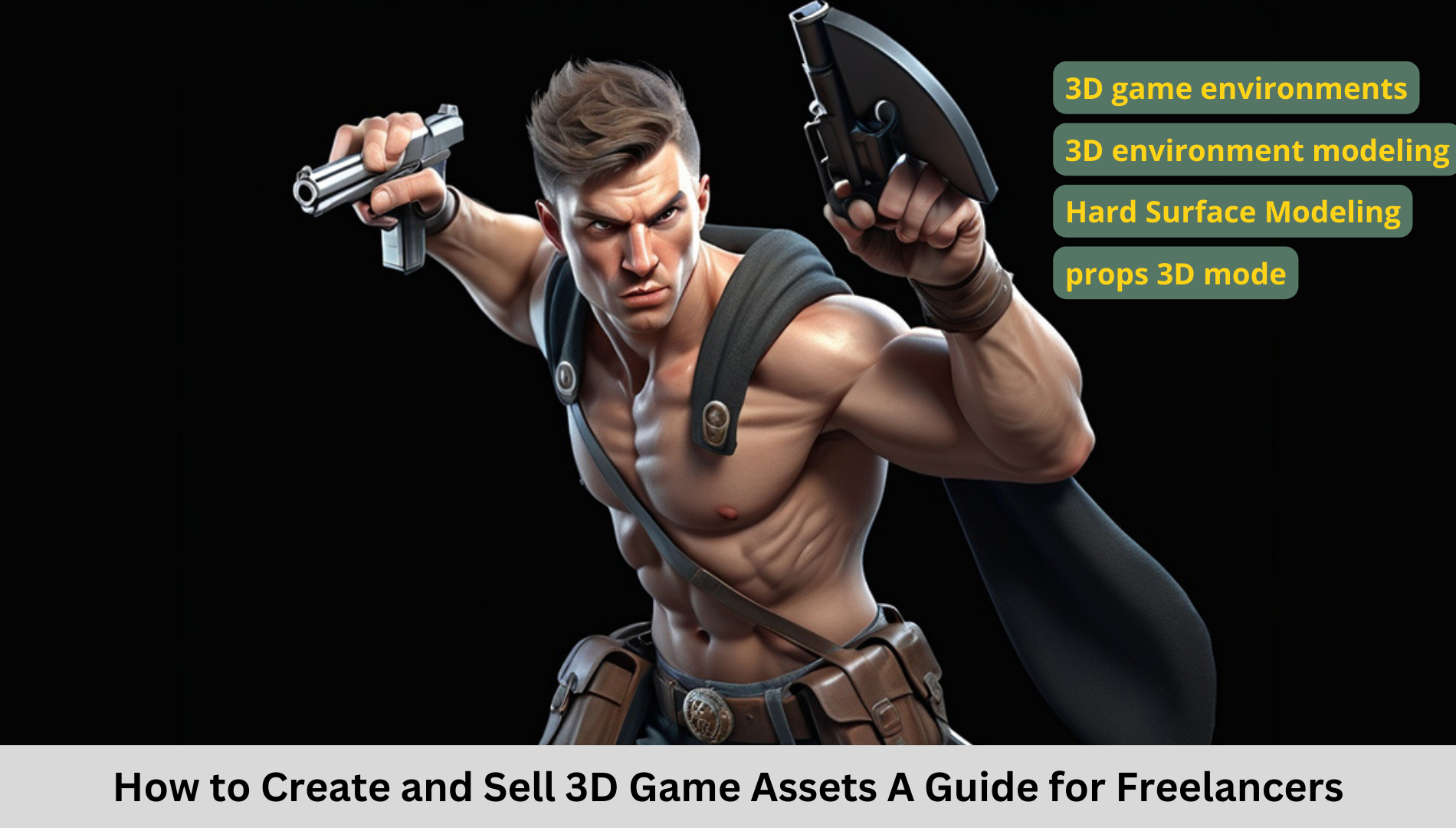The gaming industry is booming, and with the increasing demand for high-quality visuals, there is a massive market for 3D game assets. As a freelancer, creating and selling 3D game assets can be a lucrative opportunity. This guide will walk you through the process, from modeling to selling, ensuring you make the most out of your 3D modeling skills.
Understanding the Market for 3D Game Assets
Before diving into creating 3D game assets, it’s essential to understand what game developers need. Some of the most in-demand assets include:
-
Props 3D models (furniture, weapons, foliage, etc.)
-
3D game environments (buildings, landscapes, interiors, etc.)
-
3D vehicle modeling (cars, trucks, futuristic vehicles, etc.)
-
Hard surface modeling (weapons, machines, robots, etc.)
If you specialize in 3D environment modeling, 3D hard surface modeling, or props 3D models, you’ll find a vast audience in need of high-quality game assets.
Step 1: Choosing the Right Software for 3D Modeling
To create high-quality 3D game assets, you need the right tools.
-
Blender (Free, open-source, great for beginners and professionals)
-
Autodesk Maya (Industry standard for character and environment modeling)
-
3ds Max (Ideal for hard surface modeling and vehicle models)
-
ZBrush (Best for sculpting detailed organic models)
Each software has its strengths, so choose one based on your workflow and the type of 3D modeling games you want to target.
Step 2: Mastering the Art of 3D Modeling for Games
Game-ready assets require optimization to ensure they run smoothly within game engines.
1. Low-Poly vs. High-Poly Models
-
Low-poly models are optimized for real-time rendering, making them ideal for games.
-
High-poly models are used for creating detailed bakes onto normal maps.
2. Texturing and UV Mapping
-
Use software like Substance Painter or Photoshop for realistic textures.
-
Proper UV unwrapping ensures textures don’t stretch or look unnatural.
3. Hard Surface and Organic Modeling
-
Hard surface modeling is crucial for mechanical objects, weapons, and vehicles.
-
Organic modeling is needed for creatures, characters, and plants.
4. Creating Game Environments
-
3D game environments should be modular for easy reuse and optimization.
-
Make use of tiling textures, LODs (Level of Detail), and baked lighting to optimize performance.
5. Rigging and Animation for Game Assets
While not every 3D game asset requires animation, rigging is an essential skill for those interested in characters, creatures, and mechanical parts. If you plan to create 3D vehicle modeling assets or props that have moving parts, consider adding simple rigging setups. Software like Blender, Maya, and 3ds Max allow for easy rigging and animation export.
Step 3: Optimizing for Game Engines
Once your 3D game assets are ready, they need to be optimized for engines like Unity and Unreal Engine. Key considerations include:
-
Keeping polygon count manageable
-
Using texture maps efficiently (normal, specular, roughness, etc.)
-
Exporting models in game-ready formats (FBX, OBJ, etc.)
-
Ensuring proper pivot points and scaling
-
Using LODs (Level of Detail) to optimize performance across different devices
-
Testing the assets within a game engine to ensure they function correctly
Step 4: Selling Your 3D Game Assets
1. Choosing the Right Marketplace
There are several platforms where you can sell your 3D game assets:
-
Unity Asset Store (Best for Unity developers looking for ready-to-use assets)
-
Unreal Marketplace (Great for high-quality environment and props models)
-
CGTrader & Sketchfab (Perfect for freelancers selling a variety of models)
-
Turbosquid (Ideal for high-end, professional-grade assets)
Other platforms such as Gumroad and Itch.io allow independent selling with more pricing flexibility.
2. Pricing Your Assets
-
Study the competition to understand pricing trends.
-
Offer different asset packs (small, medium, large collections).
-
Provide both high-poly and game-ready low-poly versions.
-
Consider subscription-based services or bundle deals to attract long-term customers.
3. Marketing Your Work
-
Build an online portfolio showcasing your best models.
-
Use social media platforms like Instagram, ArtStation, and LinkedIn to attract clients.
-
Engage in game development communities to network with potential buyers.
-
Start a YouTube or blog to share your process and attract potential customers.
Step 5: Expanding Your Offerings
To maximize earnings, diversify your portfolio. Consider creating:
-
Car 3D models for racing or simulation games.
-
3D game environments for open-world games.
-
Props 3D models for RPGs, shooters, and adventure games.
-
3D vehicle modeling assets for different game genres.
-
Hard surface models for sci-fi and futuristic games.
-
Fantasy and medieval assets to cater to popular game genres.
6. Creating Custom and Commissioned Work
Many developers and studios require unique assets for their projects. Offering freelance commissions alongside marketplace sales can significantly increase your income. Platforms like Fiverr, Upwork, and ArtStation Jobs are great for finding custom work opportunities.
7. Passive Income Strategies
If you want to generate passive income through 3D modeling, consider:
-
Selling pre-made assets on multiple marketplaces.
-
Writing eBooks or tutorials on 3D hard surface modeling and 3D environment modeling.
-
Launching a Patreon where followers can access exclusive assets.
Conclusion
By continuously improving your skills and understanding market trends, you can build a sustainable freelance career selling 3D game assets. Whether you specialize in 3D environment modeling, hard surface modeling, or props 3D models, there is a vast market waiting for your creations.
Becoming a successful 3D game artist requires patience, skill, and marketing know-how. If you’re passionate about 3D modeling games, now is the perfect time to start. With the right approach, you can turn your creativity into a profitable business, offering unique and high-quality 3D game assets to a global audience.
Start creating today, and turn your passion for 3D modeling games into a rewarding freelance career!



